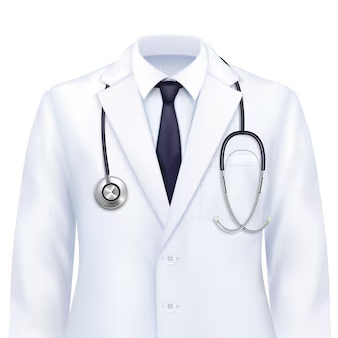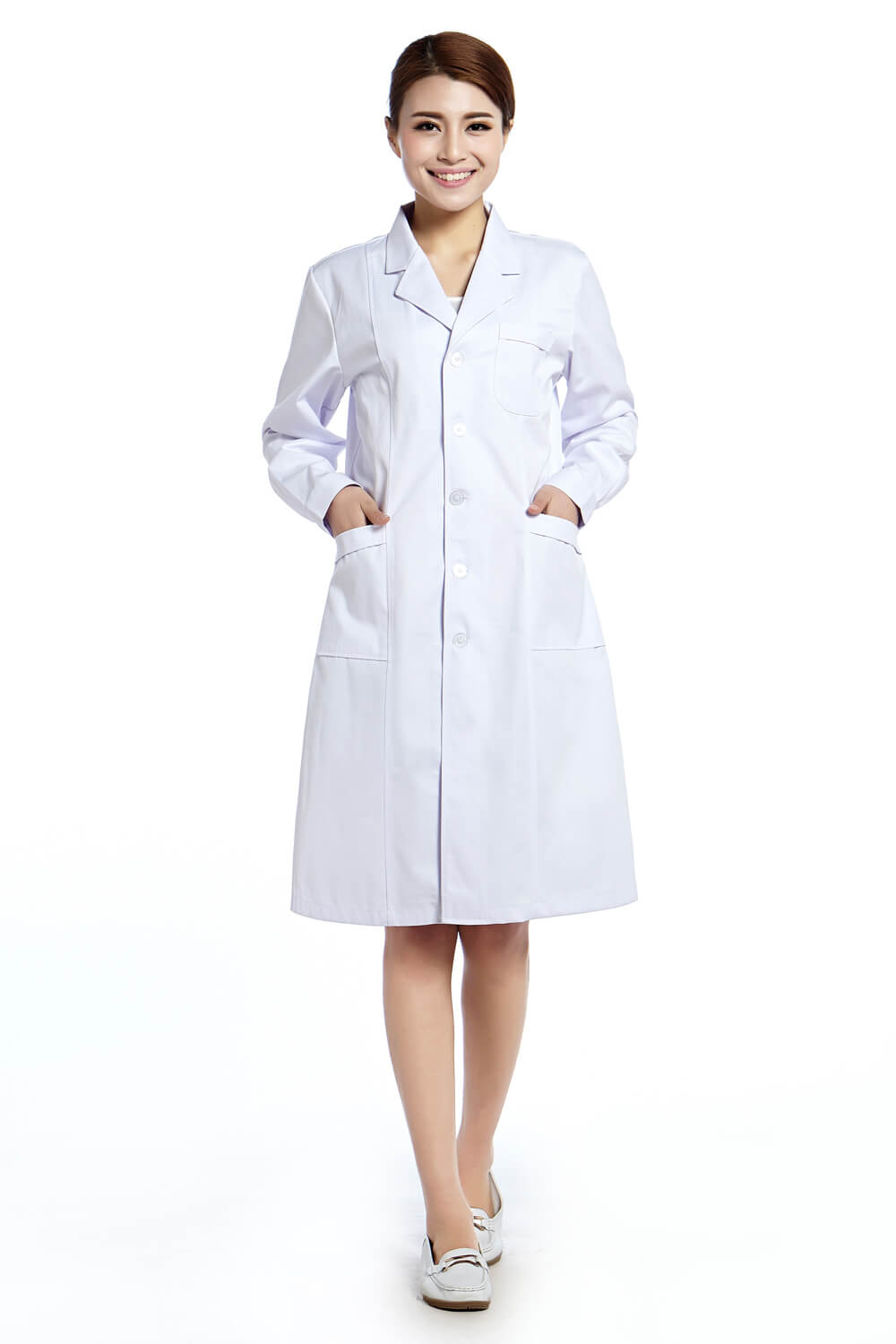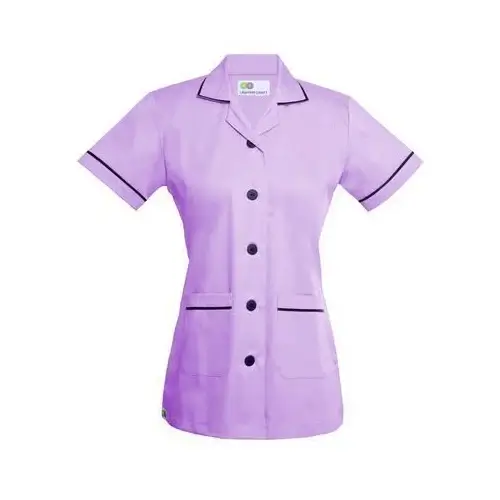- +91 76698 36868
- sales@marinedress.com
- Office 105, 1st Floor, Wegmans Business Park, Sector knowledge park III, Greater Noida 201308, India
1. Scrubs
Description
Basic uniform consisting of a short-sleeved shirt and pants. Scrubs are typically made from comfortable, breathable materials like cotton or polyester.
Uses
Worn by doctors, nurses, and other healthcare staff for general clinical work.
Features
Often includes pockets for carrying small tools and personal items. Available in various colors and patterns to denote different departments or roles.

2. Lab Coats
Description
Knee-length or hip-length coats with long sleeves, usually made from cotton or polyester blends.
Uses
Worn by physicians, surgeons, and laboratory staff to protect personal clothing and provide a professional appearance.
Features
Typically has pockets for carrying pens, notepads, and small instruments. Often includes a button or snap closure and can be white or another color to differentiate roles.

3. Gowns
Description
Long, often disposable garments that cover the body from neck to ankles, with ties or Velcro closures.
Uses
Worn during procedures and surgeries to maintain a sterile environment and protect against contaminants.
Features
Made from materials that provide protection against fluids and contaminants, such as disposable paper or reusable, washable fabrics. Can be open-back or fully closed, depending on the level of protection required.

4. Patient Gowns
Description
Simple, usually disposable garments worn by patients during hospital stays.
Uses
Provide comfort and access to medical procedures while maintaining patient modesty.
Features
Areas where chemical handling or exposure is a concern, such as fuel handling or maintenance areas.

5. Surgical Scrubs
Description
Special scrubs worn in the operating room, usually made from antimicrobial fabrics.
Uses
Worn by surgeons and surgical staff to maintain a sterile environment.
Features
Designed to be more durable and resistant to fluids. Often includes a matching surgical cap and mask.

6. Isolation Gowns
Description
Gowns designed to protect healthcare workers from infectious agents.
Uses
Worn when dealing with patients in isolation or with known infectious diseases.
Features
Made from impermeable materials to prevent the passage of fluids and contaminants. Can be disposable or reusable, with ties or elastic at the wrists and back.

7. Lab Technician Uniforms
Description
Similar to scrubs but may include additional features like reinforced pockets or specific colors for easy identification.
Uses
Worn by laboratory personnel who handle specimens and conduct tests.
Features
May have special pockets or attachments for carrying testing tools and equipment.

8. Nursing Dresses
Description
Traditional or modern dresses worn by nurses, often with a pinafore style.
Uses
Worn in some healthcare settings as an alternative to scrubs.
Features
Typically includes pockets and is designed for comfort and ease of movement.

9. Occupational Therapy Uniforms
Description
Specialized uniforms worn by occupational therapists, often similar to scrubs but with additional pockets or features.
Uses
Worn during therapy sessions and patient interactions.
Features
Includes extra pockets for therapy tools and equipment.

10. Administrative and Support Staff Uniforms
Description
Uniforms for non-clinical staff, such as receptionists and clerks, which may include business-casual attire or uniforms with the hospital's logo.
Uses
Provides a professional appearance while distinguishing staff roles.
Features
May include blouses, polo shirts, or slacks, often in colors coordinated with the hospital's branding.

11. Maternity Uniforms
Description
Scrubs or dresses designed specifically for pregnant healthcare workers.
Uses
Offers comfort and accommodates changes in body shape.
Features
Includes adjustable features and additional room for comfort.

12. Pediatric Uniforms
Description
Scrubs or uniforms designed for pediatric care, often featuring bright colors or patterns.
Uses
Worn by healthcare workers in pediatric departments to create a comforting and friendly environment for children.
Features
Often includes fun patterns or characters to make the environment more welcoming for young patients.









